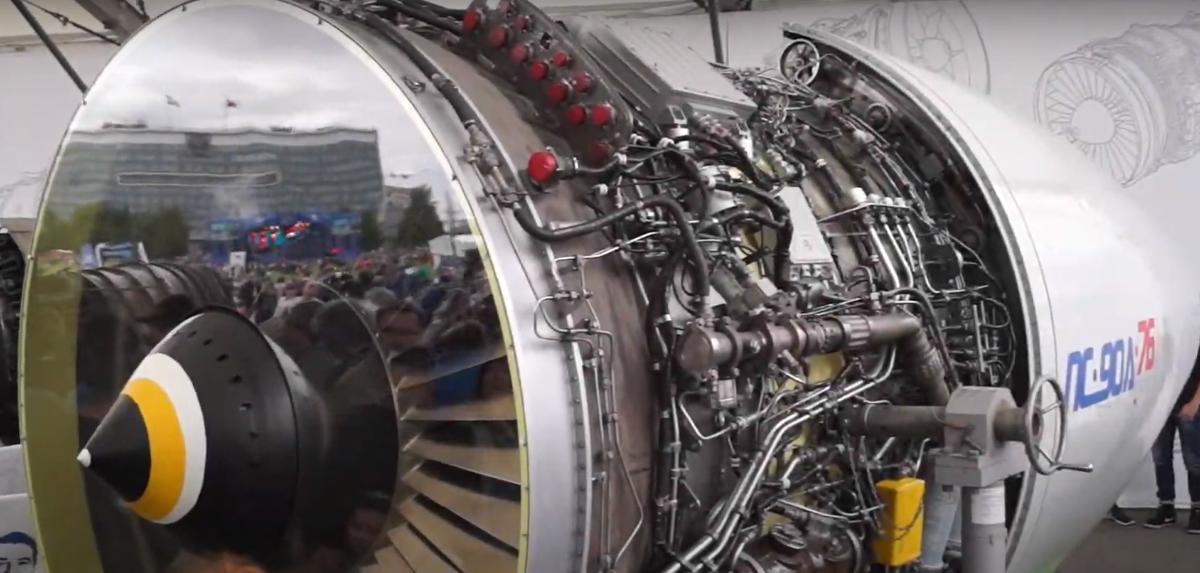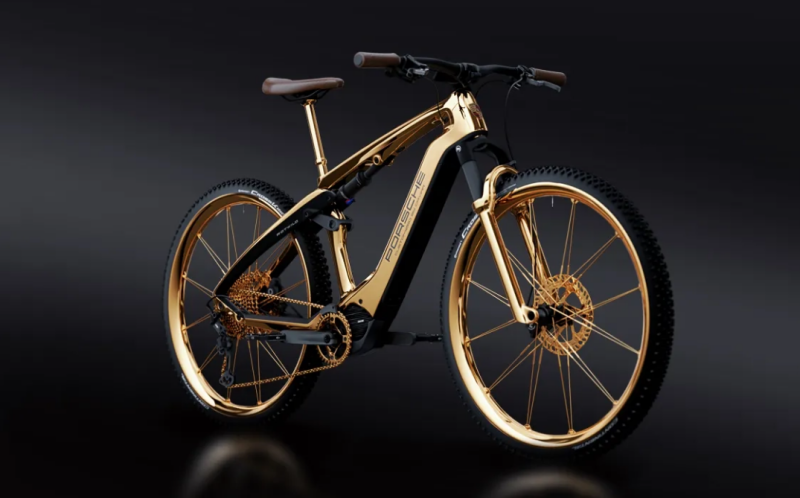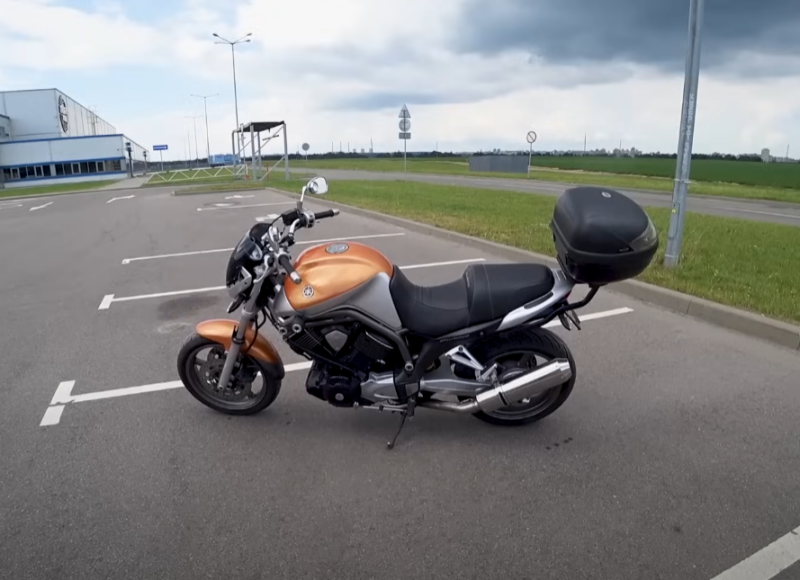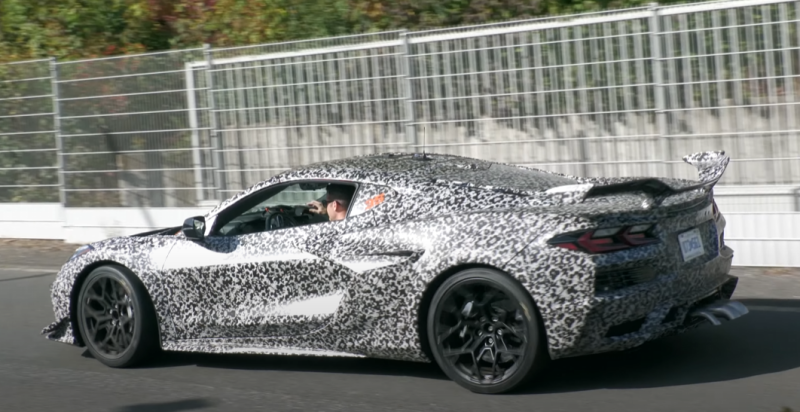A bit of history
Toward the end of the 70s, in accordance with the Decree of the Council of Ministers of the USSR, Soviet design bureaus began to develop a new medium-haul airliner. Then the future aviation flagship Tu-154 and the well-proven Tu-134 were already in operation. It was assumed that the Tu-204 being developed would replace the first one. There were many projects, even the idea of a propfan motor was considered. But in the end, it was decided to stop at the proposal of the design bureau. P. A. Solovyova. It is worth noting: the motor was originally intended for a specific aircraft - the Tu-204. At the first stages, it was planned to install 3 engines: moreover, there were disputes about their layout. There was an option to place two power plants under the wings and one at the tail unit, as, for example, in the DC-10-30.
 Unusual for the Soviet and Russian aviation industry, the layout of the engines on the Biman DC-10-30. Photo: YouTube.com
Unusual for the Soviet and Russian aviation industry, the layout of the engines on the Biman DC-10-30. Photo: YouTube.comIn the end, they settled on a twin-engine version. The new minister Silaev "had a hand in this decision", he believes that the Soviet aircraft should correspond to the representatives of the medium- and long-haul airliners of the Boeing-767 and Airbus-300 types already flying abroad. The developed engine then had the name D-90A.
In parallel with the Solovyov Design Bureau, the bureau under the leadership of N. D. Kuznetsov also developed its own motor - NK-56, which had a thrust of 18 thousand kgf. It was planned to be installed just on heavy passenger and transport liners. But for a number of reasons (many are sure that there were some “undercover” intrigues here) in 1983 the project was closed.
Preference was given to the D-90A, although it had less (16 thousand kgf) thrust. Plus, it took a redesign of the aircraft, which had to be shortened. As a result, the liner received an additional index in the name - Il-96-300, and the engine became known as D-90AN. The Tu-204 aircraft with this engine took off for the first time in 1988. A year earlier, the name of the motor was changed to PS-90A. Its production was entrusted to the Perm Motor Plant enterprise, where the engine has been mass-produced since 1989. Certification was made in 1992, the Tu-204 passed the same procedure. The motor at that time met all ICAO standards for harmful emissions and noise.
The primary operation of the PS-90A fell on the difficult 90s for the country. For example, until 2001, not a single power plant was produced. But the activity on its modernization did not stop. The result was the emergence of many engine options. Some of them went into series, others remained on paper.
Modifications
The basic version has a thrust of 16 thousand kgf, fuel consumption is 0,595 kg/kgf*h. This unit is used on Tu-204, Tu-214, Il-96-300 and Il-96-300PU (presidential) aircraft. Other versions:
- ✅ PS-90A1 was officially put into operation in 2007, complies with all ICAO standards, has increased thrust up to 17400 kgf, is installed on the Il-96-400T transporter
- ✅ more economical (difference 18-19%) and less noisy PS-90A-76 replaced the previously used D-30KP on the Il-76 liner
- ✅ PS-90AE, PS-90AE1 and PS-90AE-76, certified in 2011, have a wider operating temperature range (up to -30 C°)
The next version of the PS, in the development of which several countries took part, should be discussed separately.
PS-90A2
It was originally created jointly with Pratt & Whitney (USA), some of the components were supplied by enterprises in Switzerland, Sweden, Germany and France. As a result, it was possible to increase the efficiency of the turbine by 3%, the fuel consumption decreased accordingly, and the service life of the blades increased to 10 thousand hours. The power plant control system received a new modern element base. The gases in front of the turbine are heated to 1546 ° C, and the thrust has increased to 18 thousand kgf.
PS-90A2 meets stringent standards not only in terms of noise and emissions. The motor meets the requirements of ETOPS 180, developed for twin-engine liners. This means that if one of the units breaks down, the aircraft will stay in the air for at least 3 hours. The labor intensity of engine maintenance has decreased by 2 times, which means that maintenance costs have become 38% less. The new unit was installed on the TU-204SM. Agreed with Iran on the supply of aircraft. But alas! The participation of Americans in the creation of an aircraft engine made it difficult to fulfill the contract. They considered that the PS-90A2 had a dual purpose and imposed (through international organizations) a ban on the export of liners to Syria and Iran.
Interaction with Pratt & Whitney ceased in 2011, the rights to technologies, as well as a controlling stake, were transferred and sold to the Russian United Engine Corporation.
The situation was extremely unpleasant and an original solution was found - in the Russian Federation they began to create the PS-90A3. According to the main characteristics, this engine is identical to its predecessor, but differs from it in the installation of a fan from the PS-90A. The node is needed to localize damage in case of breakage of the upper part of the turbine blade. This made it possible to certify the PS-90A3 according to the Russian Federation's airworthiness standards (NLGS-3), and not the strict requirements of the international rules AP-33. That is, the PS-90A3 can be installed instead of the PS-90A2, if the operators consider the replacement necessary. It is clear that modified engines were delivered and the aircraft went for export.
 On the IL-76, it is possible to install the PS-90A3u-76 engine to replace the PS-90A-76. Photo: YouTube.com
On the IL-76, it is possible to install the PS-90A3u-76 engine to replace the PS-90A-76. Photo: YouTube.comPS-90A on the presidential board
In the "Gorbachev" and then "Yeltsin" times, during the heyday of friendship between the USSR (RF) and the United States, many officials had the idea to buy a Boeing for the president. But still no decision was made. The wide-body Il-96-300 turned out to be quite a successful airliner. In addition, Boeing cost a lot of money, and the economic difficulties of the 90s are well known. Aircraft No. 1 has a take-off weight of 250 tons, a maximum speed of over 900 km/h, and a flight range for production models of 9 km. What it is like on the presidential liner is not known for certain.
All aircraft components are made in Russia, including the PS-90A engine. Yes, in terms of efficiency, it is inferior to Rolls-Royce or Pratt & Whitney products, but in terms of reliability, it is unlikely. Motors for "Board No. 1" were assembled very carefully. It is known that the version for the presidential liner costs several times more than the usual PS-90A.
What's next?
In the future, a replacement for the “good old” PS-90A and its modifications is being prepared. This will not happen soon, but a new development, the PD-35, is on the way. Its thrust is 35 thousand kg, maintenance costs an order of magnitude less than the cheapest version of the PS-90A, and fuel consumption is 12-15% lower. If the PD-35 is equipped with the Il-96-400M, it will be a serious competitor to the Boeings and Airbuses. In the meantime, the "classic" PS is working on most passenger and transport aircraft.














